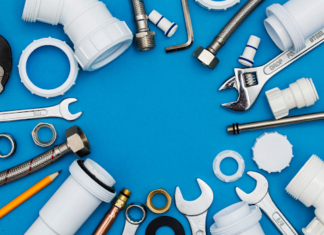Abdominoplasty is often described as a tummy tuck. It is a surgical excessive fat and skin removal procedure around the abdomen, which restores deteriorating muscles, and enhances the abdominal wall musculature. It is among the most commonly performed plastic surgeries in the United States. A tummy tuck is not similar to liposuction, though you may want to have liposuction in conjunction with a tummy tuck.
A tummy tuck is a valuable resource for patients who have excessive abdominal tissue after losing weight. Suppose you are disturbed by the look of stretched skin, persistent fatty deposits, or weaker abdominal muscles. In that case, this surgery may be the ideal choice for achieving the physique you desire. This process aims to create a firmer, smoother abdominal profile to create an aesthetically appealing abdomen. It can include both direct excisional techniques and liposuction.
Recovering Better From Tummy Tuck
You will feel a bit uncomfortable following your tummy tuck. However, understanding the different tummy tuck recovery tips, you will recover better. It is vital to have some time to regain your full mobility, strength, and independence. That said, your healthcare practitioner and recommended drugs should make the procedure as minimally sore as possible. Whatever decision you choose for your tummy tuck, it is critical to study your cosmetic surgeon’s aftercare instructions to ensure that your incision heals perfectly with the cleanest scar possible.
While using pain medication, ensure you avoid alcohol and nicotine of any form for the first six weeks. Smoking can impede the process of healing and lead to complications. Numerous factors will determine your recovery time – particularly your age, body weight, and overall health. The type of tummy tuck you undergo will also determine your healing.
During surgery, most surgeons will use steri strips, paper tape, or surgical glue. After two weeks, they may switch you to a scar cream. Some surgeons integrate laser treatment to enhance scar reformation following surgery.
Antibiotics and perhaps an anticoagulant may be prescribed. In addition, you may be given medicine to apply to your skin. Take any pain-relieving meds as suggested. You should not take any aspirin-containing drugs unless recommended by your doctor.
You may just need to stay in hospital for a couple of hours following surgery. In some cases, your surgeon may require you to stay overnight or more. Upon leaving the hospital, the real recovery process begins.
Recovery Timeline
Besides your overall health, body weight, and age, recovery depends on the type of abdominoplasty procedure you have had done. The options available are:
- Partial or Mini Abdominoplasty
Mini-abdominoplasties are regularly executed on people with fat deposits below the navel. The surgeon will probably not alter your belly button’s position during this surgery, which may take up to two hours. This varies from person to person.
- Complete Abdominoplasty
Your surgeon will slice your abdomen from one hipbone to the other, and the muscle, skin, and tissue will be curved as desirable. During the surgery, your belly button will be moved, and drainage tubes may be placed under your skin for several days.
Immediately After the Procedure
Following your tummy tuck, you ought to wear sterile gauze pads tied to your tummy region until the bleeding stops. If you lose fluids or bleed through your incision, your doctor may implant tiny tubes to facilitate drainage for several days following the surgery.
You’ll have to empty and clean the drains on a regular basis. In addition, you’ll need to take antibiotics for the duration you have the drains. If you do not, you may become infected.
To avoid blood clots forming, be up and moving within a day, albeit with assistance. Prescription pain meds and antibiotics will most probably be prescribed to ease discomfort and minimize your risk of infection.
Care
You will need to wear an abdominal binder for around six weeks or so. This helps to prevent fluid buildup and supports your abdomen. A strong, elastic bandage will be applied to facilitate good healing. Additionally, your surgeon will show you how to position yourself properly when lying down or sitting to reduce pain.
Although the recovery time for a mini-tummy tuck is commonly shorter, you will still need to avoid vigorous movement for a minimum of six weeks. This includes heavy lifting or strenuous exercise. To guarantee satisfactory healing, you may need up to four weeks away from work and other aspects following the operation.
Risks
There are possible complications, which is normal with any surgical procedure. Blood clots, bleeding behind the skin flap, and infection are all potential concerns. Inadequate healing may occur, resulting in more severe scarring or skin loss. Suppose you suffer from liver illness, diabetes, lung disease, poor circulation, or heart disease. In that case, you may be more prone to experience problems. If you do not heal correctly, consider that a second operation may be necessary.
Final Thoughts
The results of a tummy tuck are characteristically permanent, provided you maintain a healthy weight. The treatment ensures that your abdominal wall will indeed be stronger and sturdier. The excised skin will not return unless a future pregnancy extends the region again or if weight fluctuation occurs.
Several follow-up visits to your doctor will be necessary to monitor how the incision is healing. Avoid bending backward or any position requiring abdominal extension during this healing period since they may exert too much strain on your incision.
Following your caregivers’ instructions and notifying them of anything you think may be wrong will aid a smooth recovery process. If you try to hasten your recovery, you may hurt yourself or lengthen what may have been a regular healing period. Before leaving the hospital, ensure you know what medications to use topically or orally to promote healing and minimize the risk of infection.









